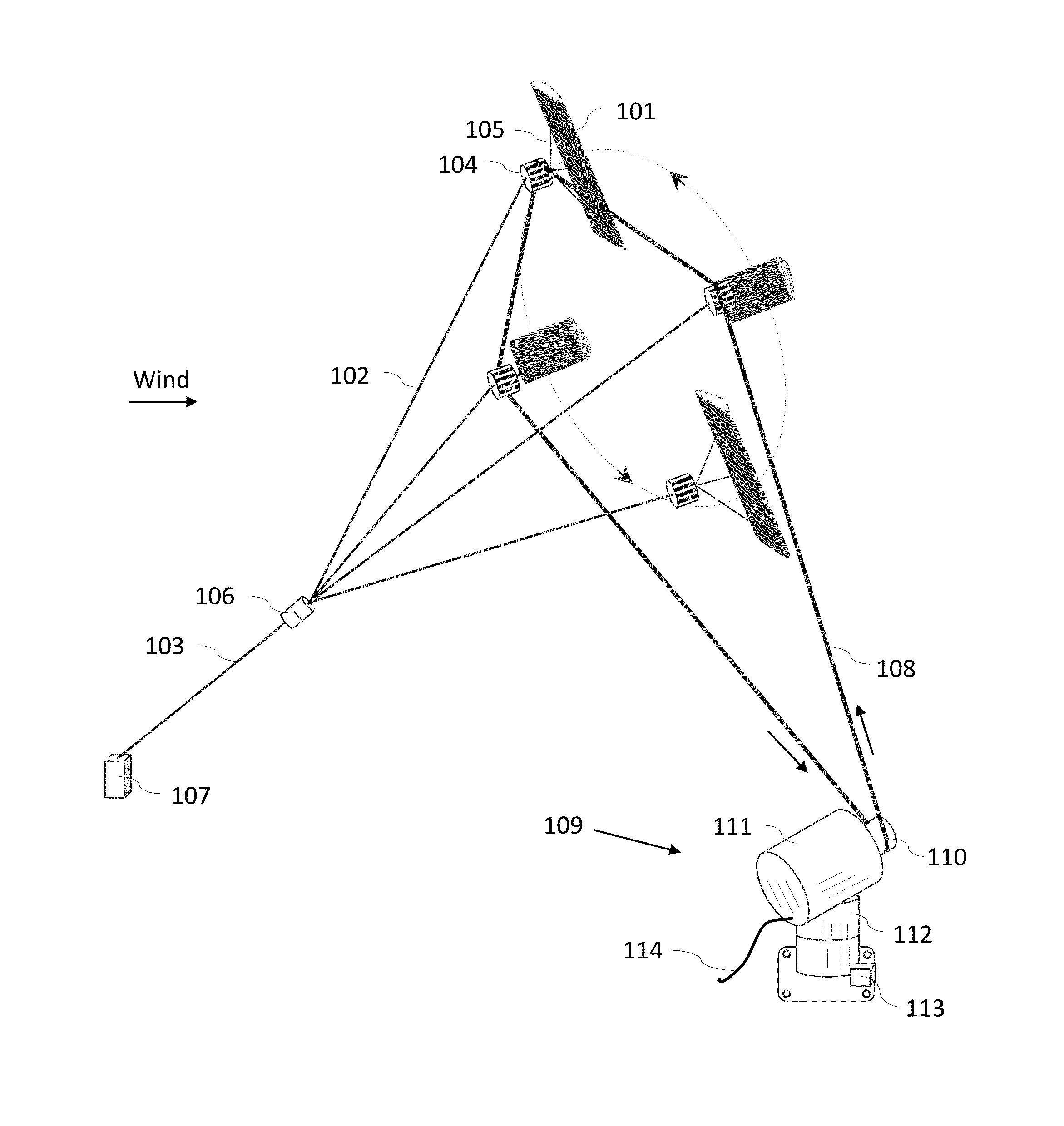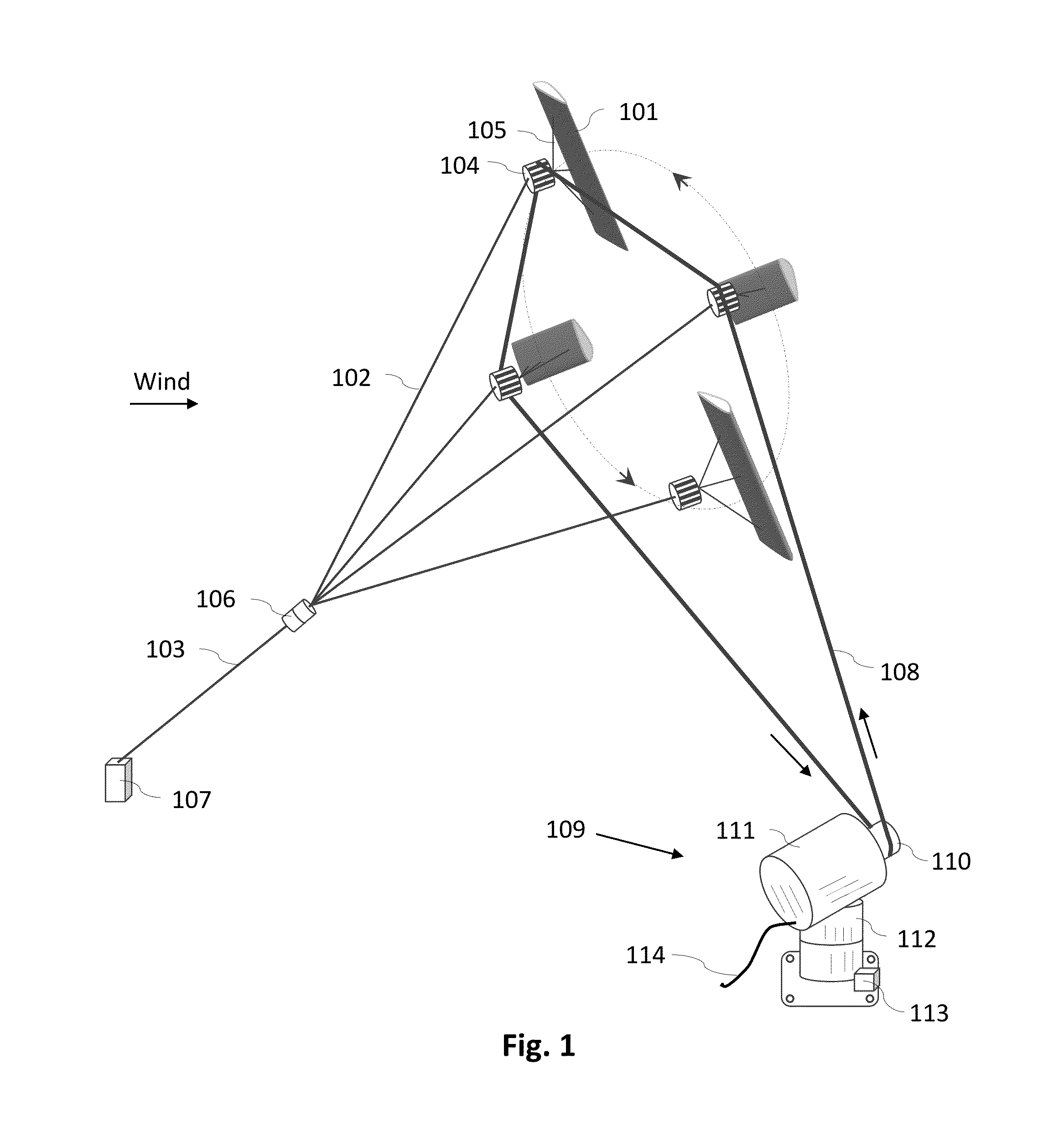Airborne wind energy conversion system with endless belt and related systems and methods
a technology of airborne wind and conversion system, which is applied in the direction of electric generator control, machines/engines, mechanical equipment, etc., can solve the problems of uneconomical whole system large weight of generators carried onboard, etc., and achieve the effect of reducing energy and enhancing safety of airborne wind energy conversion system
- Summary
- Abstract
- Description
- Claims
- Application Information
AI Technical Summary
Benefits of technology
Problems solved by technology
Method used
Image
Examples
embodiments aa
[0099]FIG. 1 shows a perspective view of one embodiment of the invention. Two or more wings 101 are placed in the air and are flying cross wind with a speed, significantly exceeding speed of the wind. FIG. 1 shows a variant of the embodiment with four wings. The trajectory of all the centers of wings 101 is the same and it is a closed curve. Each wing 101 carries a traction device 104, which is described below. Trajectory of traction devices 104 lies in a substantially one plane, or close to one plane. We will call it plane P. Traction device 104 can be attached to wing 101 directly and rigidly near wing's center or via suspension cables 105. Each wing is held by a wing cable 102, which can be attached to a traction device 104. The other side of each cable 102 is attached to a top part of an anti-twist device 106. A joint tether 103 attaches the bottom part of anti twist device 106 to a ground anchor 107. Ground anchor 107 can take form of a peg or a short tower. In time of normal w...
PUM
 Login to View More
Login to View More Abstract
Description
Claims
Application Information
 Login to View More
Login to View More - R&D
- Intellectual Property
- Life Sciences
- Materials
- Tech Scout
- Unparalleled Data Quality
- Higher Quality Content
- 60% Fewer Hallucinations
Browse by: Latest US Patents, China's latest patents, Technical Efficacy Thesaurus, Application Domain, Technology Topic, Popular Technical Reports.
© 2025 PatSnap. All rights reserved.Legal|Privacy policy|Modern Slavery Act Transparency Statement|Sitemap|About US| Contact US: help@patsnap.com



